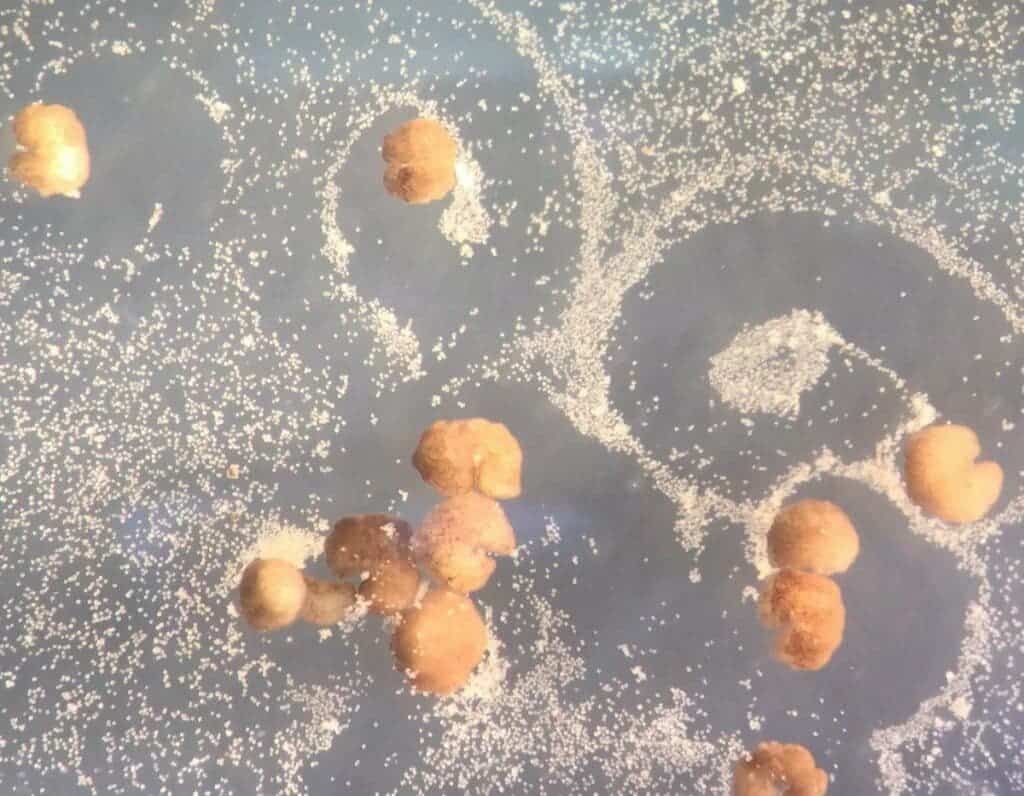Whether it’s a budding plant or sexual reproduction, all replication on our planet involves the growth of progeny within or on the organism’s body. However, scientists have engineered the first-ever living robots that procreate using an entirely new form of reproduction never before seen on earth.

Researchers led by the University of Vermont have enabled new lifeforms known as Xenobots to produce ‘offspring.’ The biological robots were designed on a supercomputer by artificial intelligence (AI) and then built in real life using embryonic stem cells from a frog. When the team tested the AI’s design in the lab, they were amazed when the Xenobots actually started self-replicating.
“People have thought for quite a long time that we’ve worked out all the ways that life can reproduce or replicate. But this is something that’s never been observed before,” says co-author Douglas Blackiston, the senior scientist at Tufts University.
In 2020, the team used AI to draft the blueprints for alien lifeforms using simulated biological material, which they then built in real life using embryonic tissue from the Xenopus laevis frog. The Xenobots were molded into different shapes depending on the desired function; after three days, they spontaneously developed cilia and were able to move on their own — staying alive for weeks due to their embryonic energy stores.
This initial study validated the observation that scientists can remove stem cells from an embryo and coax them into previously unseen organisms – where they exhibit behaviors not seen in their embryonic host. For instance, they could form skin cells if left to develop into a fetus.
“They would be sitting on the outside of a tadpole, keeping out pathogens and redistributing mucus,” says Michael Levin, director of the Allen Discovery Center at Tufts University and co-leader of the new research. “These cells have the genome of a frog, but, freed from becoming tadpoles, they use their collective intelligence, a plasticity, to do something astounding.”
In the new study, their supercomputer advised the team to resculpt the living robots into a pizza shape with a slice missing, so they looked like Pac-Man from the famous arcade game. The scientists then placed the Xenobots in a dish filled with thousands of free-floating cells. They were aghast when the robots began to swim around using their mouths just like Pac-Man, gathering hundreds of cells, compressing them into baby Xenobots using an approach called ‘kinematic replication.’ In this technique, the self-assembly of the organisms relies on their movement and environmental temperature to produce offspring.
Here, the offspring moved just like their parents to spontaneously begin the kinematic process again after just five days. This behavior is not only absent from the donating embryo but every other known plant or animal on planet earth.
The team posits that we may even be witnessing the very origins of life where peptides began to self-assemble into larger molecules-predating RNA transcription-wholly reliant on kinematics to replicate. The theory, called the ‘Primordial Soup,’ has challenged many scientists since J.B.S Haldane originally proposed it in 1929. They could finally be provided with a defining answer thanks to this study.
In practical terms, the robots’ ability to procreate will significantly extend the length of time the tiny Xenobots (which typically live about a week) can perform functions inside the human body. In the future, the team could reshape the robots to scrape away plaque in arteries, chase down cancer cells, or sculpt tissue for organ transplantation.
Joshua Bongard, a robotics expert at the University of Vermont who co-led the new research, points to the end of the COVID pandemic.
“The speed at which we can produce solutions matters deeply. If we can develop technologies, learning from Xenobots, we can quickly tell the AI,: ‘We need a biological tool that does X and Y and suppresses Z,’ —that could be very beneficial. Today, that takes an exceedingly long time.”
The team now aims to use its technology to speed up solutions for the next world crisis.
Source: Proceeding of the National Academy of Sciences


